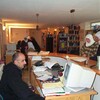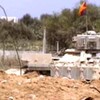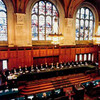
117 Palestinians killed, hundreds injured during media's "relative calm"
26 December 2003
Many leading media sources were quick to declare that an Israeli assassination in Gaza, followed by a Palestinian bombing in Tel Aviv on 25 December marked the end of a period of “relative calm” or “lull” in Israeli-Palestinian violence, that had supposedly lasted since the last Palestinian suicide attack in Haifa on 4 October. In fact, the period since 4 October has been one of intense Israeli violence, in which 117 Palestinians were killed, including 23 children. At the same time, Israel destroyed almost five hundred Palestinian homes throughout the Occupied Territories. EI’s Ali Abunimah examines the systematic media misrepresentation of the latest events. Read more about 117 Palestinians killed, hundreds injured during media's "relative calm"








